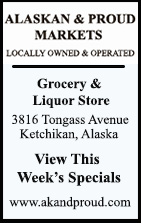|
Fish Factor State Wants Input on Distributing Cod Crash Relief Funds; Better Make It Quick, Deadline is April 10By LAINE WELCH April 05, 2020
Better make it quick – the deadline to comment is April 10. Cod is Alaska’s second largest groundfish harvest (after pollock), but the Gulf stock dropped by 80% in 2018 following a three year heatwave that disrupted food webs, fish metabolism and egg survival on the ocean floor. It combined to push down cod catches to just 28.8 million pounds, compared to nearly 142 million pounds the previous year. The catch in 2019 was cut again to just over 27 million pounds; for 2020, the Gulf of Alaska was closed to cod fishing from three to 200 miles offshore. Federal data show the number of boats targeting Gulf cod has dwindled to just 64, down from 275 six years ago. The disaster relief money for 2018 was cut loose by the Dept. of Commerce in late February. On March 20 a letter sent out by Alaska Dept. of Fish and Game Commissioner Doug Vincent-Lang launched a timeline for developing a funding distribution plan and calling for input from 10 affected communities and 14 fishing groups. The letter said the State hopes to draft an initial plan and distribute it for stakeholder comments this month. The plan will be revised in May based on the public input; a second round of comments will be solicited in June and July. The final distribution plan will be sent to the Secretary of Commerce in August. Disaster funds can be used to assist fishing communities by helping fishermen, subsistence users, and shore-side businesses and infrastructure. Funds also can be used for research activities to improve the fishing ecosystem and environment. The letter said “the State recognizes that a healthy and productive Pacific cod fishery is vital to fishery participants and our coastal communities. Therefore, we intend to consider prioritizing 30% to 50% of the disaster funds for research projects to help scientists, managers and stakeholders understand the root cause of the 2018 Gulf of Alaska Pacific cod fishery failure and continued low stock levels to help identify management actions that can prevent, minimize or mitigate future fishery failures. We would appreciate your suggestions for potential research priorities for the draft distribution plan.” Comments and recommendations should be emailed to ADF&G by April 10 to dfg.2018goapacificcod@alaska.gov/ The funds will be administered by the Pacific States Marine Fisheries Commission.
Disaster relief funds can take years before they make it into the hands of those who need the money. Funds for the 2016 pink salmon failure, for example, were sent out starting just two months ago after languishing on bureaucrats’ desks in Washington, DC for more than two years. A bipartisan bill called the Fishery Failures: Urgently Needed Disaster Declarations Act (Fishery FUNDD Act) aims to improve the process and ensure more timely relief for affected people and communities. Introduced earlier this year by Representatives Jared Huffman (D-CA) and Steven Palazzo (R-MS), the Act would, among other things, set a 120-day timeline for the Secretary to evaluate a request, and set a 90-day timeline for disbursal of appropriated funds after completed spending plans are submitted. "The failure of a fishing season is devastating to fishermen and their communities, but in recent years, the poor performance of our fishery disaster assistance program has itself become a disaster," said Noah Oppenheim, executive director of the Pacific Coast Federation of Fishermen's Associations. "Fishery disasters impact port communities, but they also harm the broader economy and limit Americans' access to domestic seafood. This important bill will enhance our commercial fishing safety net, ensuring that fishery disaster assistance reaches communities in need in weeks instead of years." Call for Covid-19 comments: While the U.S. seafood industry awaits a $300 million aid package as part of the $2.2 trillion Coronavirus Aid, Relief, and Economic Security Act , the National Marine Fisheries Service has launched an effort to collect detailed information on impacts from the pandemic and resulting economic lockdown. The online project is asking fishermen, aquaculture growers and other businesses through the seafood supply chain to submit information by email to the task force at NMFS.COVID-19@noaa.gov “We recently stood up a team of experts from across the agency to collect and analyze covid-19-related impacts on the U.S. commercial seafood industry, including wild harvest and aquaculture,” according to a NMFS statement last week. “We are interested in learning about the virus’ impacts on their employees, their business, the businesses they support, and the broader seafood supply chain. We are also looking at impacts on the recreational, subsistence, non-commercial, and tribal fishing industries.” In what is being called “an historic shift,” the $300 million earmarked for fishing communities provides unemployment support for the self-employed, including fishermen. Kodiak gets crabby: Kodiak’s Tanner crab fishery wrapped up a few weeks ago after a longer than usual two month opener. As expected, it was slow going for 49 boats that dropped pots for a 400,000 pound catch limit. What was most exciting were the numbers of small crab seen during the fishery, said Nat Nichols, area shellfish manager for the Alaska Dept. of Fish and Game office in Kodiak. “That’s great to hear from the fleet,” Nichols said. “What they were seeing is this group of crab we first saw in 2018 and they were about a year old during that survey. It’s the biggest estimate of Tanner crab we’ve seen in the time series.” The total Tanner cohort is estimated at 270 million crab, the largest seen in trawl surveys dating back to 1988. “They are getting to a size where fishermen are seeing them in the gear, so there’s a lot of excitement about that,” Nichols said. “In the past it’s taken about 4 years from when we first see them to when they get to legal size and we start fishing on them. We expect them to reach that in the 2023 fishery.” However, this group of crab appears to be behaving a bit differently and Nichols said it’s very likely there are two good years of recruitment. There also is a large size range and the crabs appear to be growing faster than they’ve seen in the past. Their survival rates also are better, and Nichols said that could be due to fewer cod feeding on the tiny Tanners. “That certainly can’t hurt and I don’t think it’s a huge stretch to say that it’s likely that Tanner crab are going to be worth more in Kodiak in the next few years than cod will be, in terms of volume and numbers,” he said. Kodiak fishermen got an advance price of over $4 per pound for the crabs which weigh 2.2 pounds on average, but final payouts are likely to take a hit from the coronavirus impacts on markets. Kodiak crabbers are now readying pots for Dungeness which opens on the east side of the island on May 1 and at the southern tip on June 15. Last year’s dungie fishery produced over 1.5 million pounds, the biggest catch since 1992. Nichols said he expects more than 25 boats on the grounds this year, up from 15. The 2018 Dungeness price averaged about $2.85 a pound, worth about $4.3 million at the Kodiak docks. New Fish Board names: Governor Mike Dunleavy has appointed Abe Williams of Anchorage and McKenzie Mitchell of Fairbanks to the Alaska Board of Fisheries. No background information was provided. Williams is Director of Regional Affairs for the Pebble Partnership. According to Northern Dynasty Minerals, Williams is originally from King Salmon and is a fourth generation Bristol Bay fisherman. Williams worked for the state Department of Transportation for 19 years and served three years on the Bristol Bay Borough assembly. McKenzie Mitchell is a hunting and fishing guide who “has fished with several remote lodges over the years” and is based at Fairbanks International Airport, according to a Google search. The governor also reappointed John Jensen, of Petersburg. The seven-member Board sets management policy for Alaska’s commercial, sport, personal use and subsistence fisheries. Appointments must be approved by the Alaska legislature.
SitNews ©2020 Stories In The News Ketchikan, Alaska
|
||||





